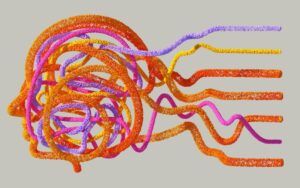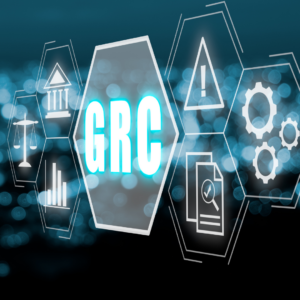
Art Clomera
Vice President, Operations
Federal agencies on the hunt for efficiency breakthroughs can find a formidable ally in Robotic Process Automation (RPA). Unleashing the power of RPA has brought speed and simplicity to manually managed office processes for many of our clients, freeing brilliant minds for strategic thinking.
At IPKeys, we approach RPA as a dynamic tool, configurable to your organization’s tailored goals and future workflows. But our approach to RPA for government agencies doesn’t stop at process automation. We hold strong views on accountability. That’s why we use clear metrics (QBI) to measure the impact of every RPA solution, working hand-in-hand with stakeholders to ensure it delivers value you can quantify.
Take the Defense Logistics Agency (DLA) for example. Together, we deployed over 100 automation cases, contributing over 130,000 hours to the DLA’s mission. We also enabled 24/7 operations when the DLA became the first federal agency to operate with Unattended automation architecture.
Let’s peel back the layers of how these results were achieved, step-by-step.
What is robotic process automation (RPA)?
Integrating RPA into your workflows is like gaining an army of software “bots” that never leave the office, go on vacation or take sick days. Armed with automation, computer vision and machine learning, these bots can log into applications, enter data, and fill out forms.
In fact, RPA can mimic almost any human interaction with digital systems or rule-based business processes requiring manual management. For companies and agencies across every sector, RPA means doing more with less, faster and more accurately, without taking a coffee break.
Let’s explore some RPA examples.
Five real-world RPA use case examples
RPA’s versatility extends far and wide, transforming workflows across diverse industries. Here are just a few RPA use case examples of how organizations can achieve remarkable results.
1. RPA + Finance/Accounting: No more paper pushing
According to Forrester, finance leads the pack in RPA adoption, with 36% of all use cases. This is no surprise. The sector has been automating for years, and RPA is the next wave of efficiency. Think customer research, account openings, and even fighting financial crime.
Why is 1 in 3 bots a banking bot? Simple. Banking’s backbone is built on rule-based processes. RPA brings faster service with near-zero mistakes. Best of all? People who work at banks have more time to focus on what humans do best – problem-solving complex customer interactions and nurturing relationships.
2. RPA + Human Resources: Boost productivity
For HR teams, RPA spells reduced workloads, fewer errors and more time to commit to talent development and employee engagement.
That’s because RPA takes the grunt work out of employee repetitive tasks like payroll processing, bringing speed and precision to timesheet submissions, calculating salaries and ensuring everyone is paid on time without fail.
Google also uses RPA bots to automate their onboarding by leveraging RPA to boost productivity. Google’s RPA bots swing into action even before the new hire’s first day:
- Onboarding on autopilot: Google’s RPA bots send pre-hire checklists and helpful tips to new hires, preparing them to hit the ground running
- Manager alignment: Google’s RPA sends the same onboarding information to hiring managers, keeping both parties aligned on expectations
- Pre-arrival engagement: Using RPA to reach out to new hires boosts engagement and indirectly helps Google achieve low employee turnover
3. RPA + Customer Service: Perfect match
Integrating RPA with AI is a match made in heaven for customers. By combining RPA’s efficiency in handling repetitive tasks with AI’s NLP capability to understand and process natural language, businesses can offer more sophisticated and responsive customer interactions.
For example, Bank of America’s chatbot Erica leverages AI to understand complex queries and RPA to execute the necessary backend processes.
Let’s say a customer contacts the bank about a lost debit card. Annoyed but relieved, they reach for their phone. Instead of a busy signal, they’re greeted by a friendly virtual assistant powered by RPA software. With infinite patience, the AI chatbot walks the customer through the steps to report the lost card and request a replacement, freeing up teams to use critical thinking to solve trickier situations like fraud or disputes.
4. RPA + Supply Chain Management: Seamless delivery
Picture a supply chain so smooth it makes butter look gravelly. RPA’s impact on logistics goes beyond pushing papers—they play 4D chess with inventory, demand forecasting and last-mile delivery.
Walmart, for instance, uses RPA to automate its inventory management processes. In this robotic process automation example, retail bots watch stock levels in real-time and order new inventory before the shelves even know they’re empty. Plus, RPA updates the inventory system across thousands of locations 24/7 without missing a beat.
5. RPA + Cybersecurity: Automating risk management
IPKeys CLaaS®, the federal agency cyber leader dashboard, leverages the combined power of RPA and AI to transform Risk Management Framework (RMF) processes for federal agencies. Federal agencies gain a high-performance, flexible, and user-friendly platform to stay ahead of threats, maintain compliance, and make decisions with unprecedented efficiency and accuracy.
Let’s go backstage to see how these technologies integrate:
- Automated data harvesting and Integration: RPA bots continuously collect RMF scan data from diverse agency systems, consolidating it for AI analysis.
- Intelligent process streamlining: While RPA handles routine RMF tasks, AI algorithms analyze data patterns, optimize workflows, and identify areas for process improvement.
- Dynamic visualization and reporting: RPA automates the creation of customizable dashboards and reports, with AI ensuring the most critical information is highlighted for quick decision-making.
- Proactive alert management: RPA bots manage alert generation and distribution, while AI fine-tunes thresholds based on learned patterns and agency-specific risk profiles.
- Automated compliance monitoring: RPA continuously checks for RMF compliance, with AI flagging anomalies and automatically generating compliance reports.
- Intelligent vulnerability management: AI identifies critical vulnerabilities, triggering RPA bots to automatically generate and distribute Plans of Action and Milestones (POA&Ms).
- Predictive risk assessment: AI analyzes historical data to predict potential threats, while RPA automates the calculation of Rough Order of Magnitude (ROM) impact for mitigation strategies.
- Machine learning: As RPA bots gather more data, AI/ML algorithms continuously learn and adapt, enhancing the accuracy of insights and recommendations over time.
- Automated audit trail: RPA maintains a detailed, automated audit trail of all RMF-related activities, with AI providing advanced analytics for forensic capabilities.
A detailed breakdown of the RPA process
When approached through the lens of Quantifiable Business Impact (QBI), RPA goes beyond reducing workload. It delivers clear, measurable improvements in process efficiency, compliance and meaningful change for your agency.
Our RPA implementations are disciplined, standardized, and focused on meeting the highest compliance standards. Here’s a breakdown of our typical approach to the RPA process, from initial discovery to deployment and beyond.
1. Discovery and assessment
At IPKeys, an RPA project begins by pinpointing processes with the highest potential for measurable impact.
What we do:
- Identify Candidates: We examine operational processes to find those that are rule-based, repetitive, and high-volume
- Evaluate Feasibility: We assess the technical feasibility of automating the identified processes
- Business Impact Analysis: We determine the potential benefits, such as cost savings and efficiency improvements
2. Process mapping and documentation
Once high-impact processes are identified, we create detailed maps of current workflows, documenting each step with quantifiable metrics.
By thoroughly documenting current workflows, a blueprint emerges for an RPA solution that automates tasks and strengthens governance.
What we do:
- Map Workflows: Create detailed flowcharts and diagrams of your current process
- Define Rules: Clearly define the rules and decision points within your process
- Full Discovery: Collect necessary information and take note of detailed requirements for your RPA implementation
3. Solution design
Our team puts on our design hats and plans your RPA implementation. Expect a granular map of how your bots will interact with various systems, plus the tools that are just right for your challenges.
What we do:
- Tools: Choose the right RPA tools and platforms for your environment
- Develop: Design overall architecture, including deployment and integration points
- Prototypes: Develop prototypes to validate the design and functionality
4. Development and configuration
We develop and configure your RPA to deliver on quantifiable targets within your operational and regulatory framework.
What we do:
- Develop: Code and configure the bots according to the process requirements
- Integrate: Ensure the RPA plugs in seamlessly with your existing systems
- Test: Put our RPA through its paces to ensure it delivers across performance, reliability and accuracy benchmarks
5. Deployment and monitoring
After development, we carefully deploy RPA into your production environment, ensuring it integrates with the data sources and systems needed to begin your process automation.
What we do:
- Deploy: Move the bots from the development environment to a “live” one
- Monitor: Continuously monitor performance
- Tweak: Keep solution maintained, updated, and adaptable to process, environment or regulatory changes for peak performance
RPA Case study: How the Defense Logistics Agency (DLA) gained +130,000 mission hours
The Defense Logistics Agency (DLA), responsible for managing the global supply chain for the US military, faced significant challenges.
The DLA’s challenge
DLA needed a solution to automate these processes, increase efficiency, and allow its workforce to focus on more strategic tasks.
- Overwhelming volume of repetitive, time-consuming tasks
- Need for 24/7 operations to support global military logistics
- Unoptimized use of skilled workforce on low-value activities
- Increased demand coupled with supply chain disruptions due to the COVID-19 pandemic
- Pressure to improve accuracy and compliance in complex logistics processes
The DLA’s solution
IPKeys deployed an RPA solution focused on security, efficiency and Quantifiable Business Impact.
- Developed and deployed over 100 automation use cases across various DLA departments
- Implemented a scaled Unattended automation architecture, making DLA the first federal agency to achieve this level of RPA sophistication
- Focused on automating “transactional” type processes, including: inventory management, purchase order processing, vendor management, invoice processing, logistics tracking
- Utilized IPKeys’ expertise in cybersecurity to ensure secure implementation of RPA tools
- Provided ongoing support and optimization
The DLA’s results
The DLA became the only RPA customer in the Federal Government with a scaled Unattended automation architecture, broadening the potential RPA use cases when implemented effectively.
To date, with over 100 automation running without the need for constant human oversight, the DLA has been able to:
- Save over 130,000 hours: Automating routine tasks has freed employees to engage with higher-value tasks, directly contributing to the agency’s mission
- Maintain continuous operations: RPA’s precision, speed, and 24/7 efficiency ensure the DLA’s critical processes function seamlessly across the global supply chain for the US military
IPKeys: Leading the way in federal RPA solutions
Our approach to RPA is flexible and tailored to each client’s needs:
- Continuous evaluation of emerging RPA tools and capabilities
- Close collaboration with stakeholders to define Quantitative Business Impact (QBI) metrics
- Implementation of Agile methodologies, including Sprint Retrospectives
- Regular reviews and demos to enhance customer support and satisfaction
- Commitment to delivering measurable business outcomes
Learn more about our Software & Systems Engineering services.
Common FAQs
RPA is ideal for repetitive, rule-based tasks. Look for processes that involve high-volume data entry, invoice processing, report generation, or any manual activity that can be clearly defined with set steps.
RPA automates routine security operations tasks, freeing analysts to focus on more complex threats. Think: analyzing security logs, patching vulnerabilities, and managing user access – all automated for faster response and fewer errors.
RPA bots require human oversight to ensure they function correctly and identify any errors. Regular maintenance includes updating bots with new data sets or rules as needed to maintain their effectiveness.
Look for processes that are:
- Repetitive and rule-based: Tasks with well-defined steps and minimal human judgment required.
- Time-consuming: Manual tasks that consume significant employee time, hindering productivity.
- Prone to errors: Processes with a high risk of human error due to data entry or repetitive actions.
Consider areas with high transaction volumes (data entry, form processing, or report generation).
QBI metrics typically focus on measurable outcomes that directly impact the company’s financial health, operational efficiency, or strategic goals.
Key QBI metrics include:
- Quantifiable: They are expressed in numerical terms, allowing for precise measurement and comparison.
- Objective: QBI metrics are based on factual data rather than subjective opinions.
- Actionable: They provide insights that can guide decision-making and strategy adjustments.
- Aligned with business goals: QBI metrics are directly linked to the organization’s overall objectives.



